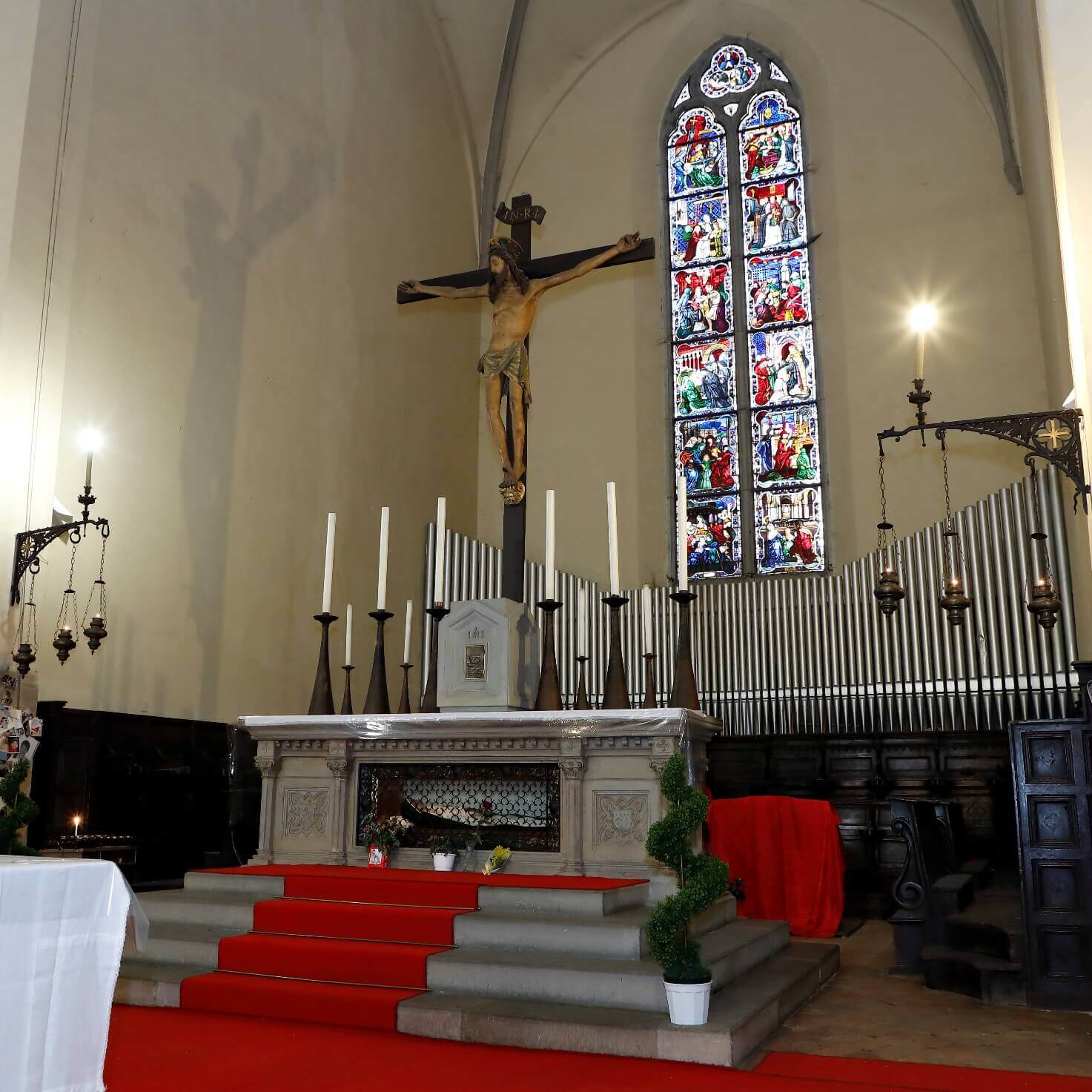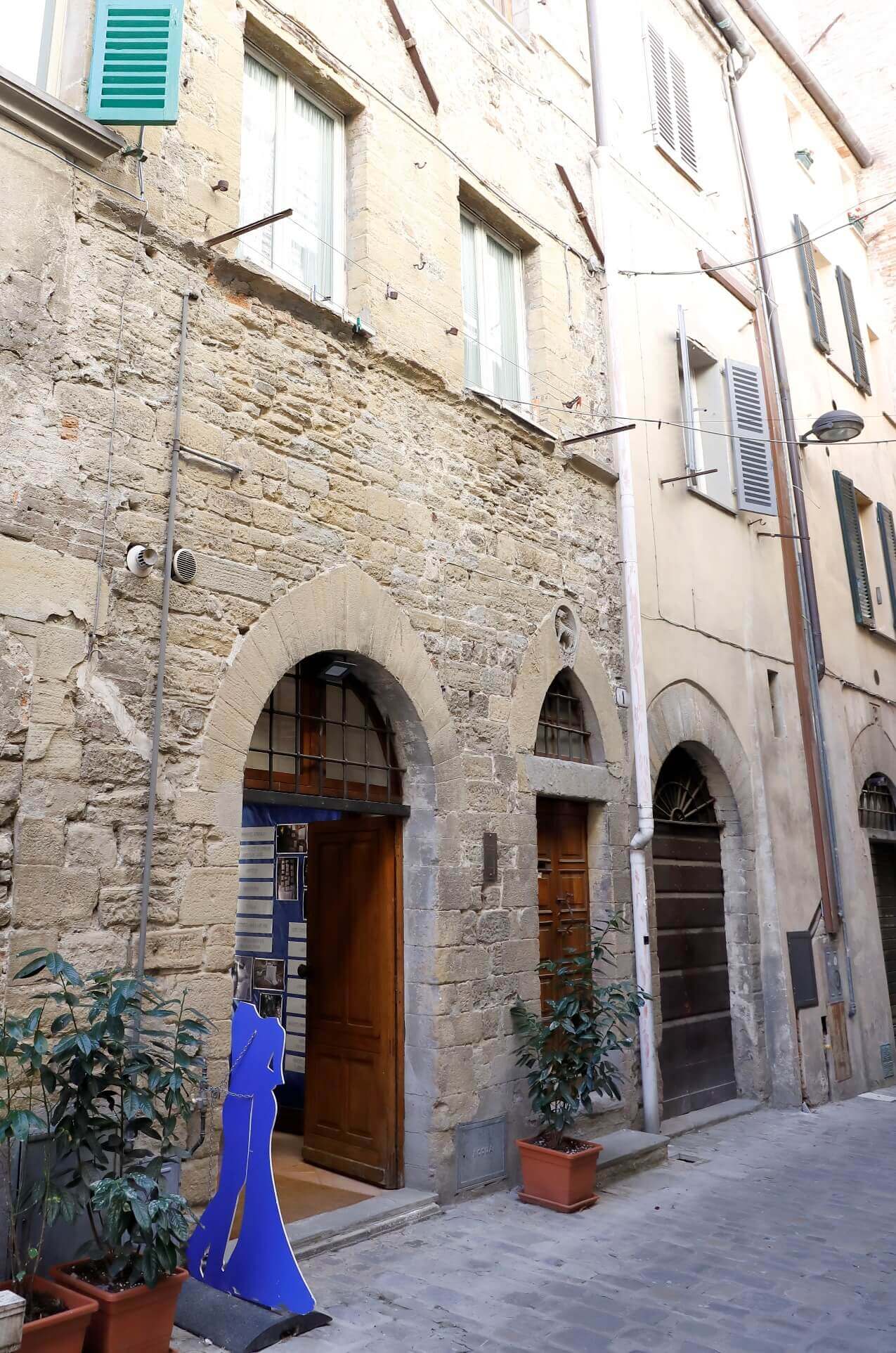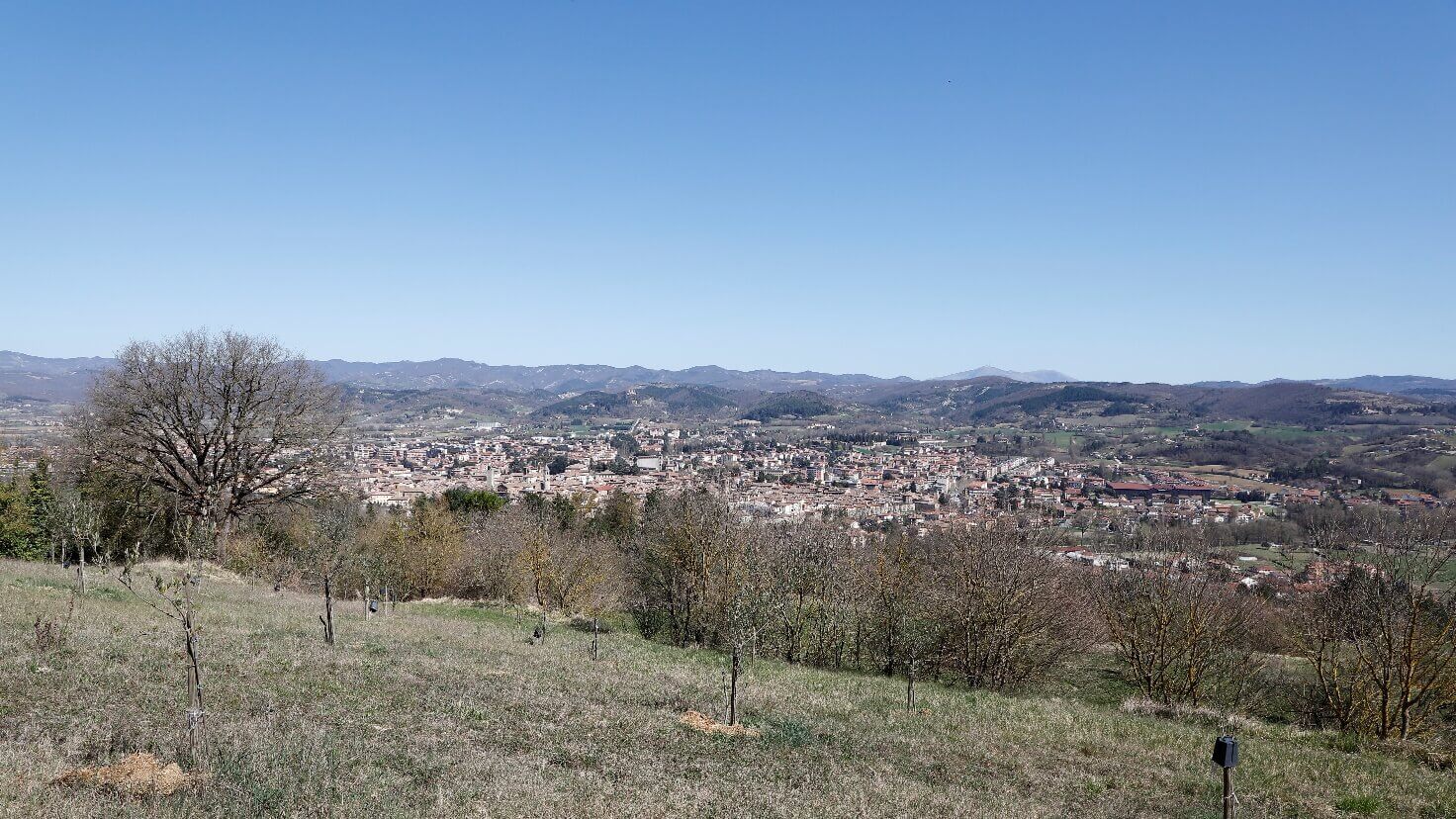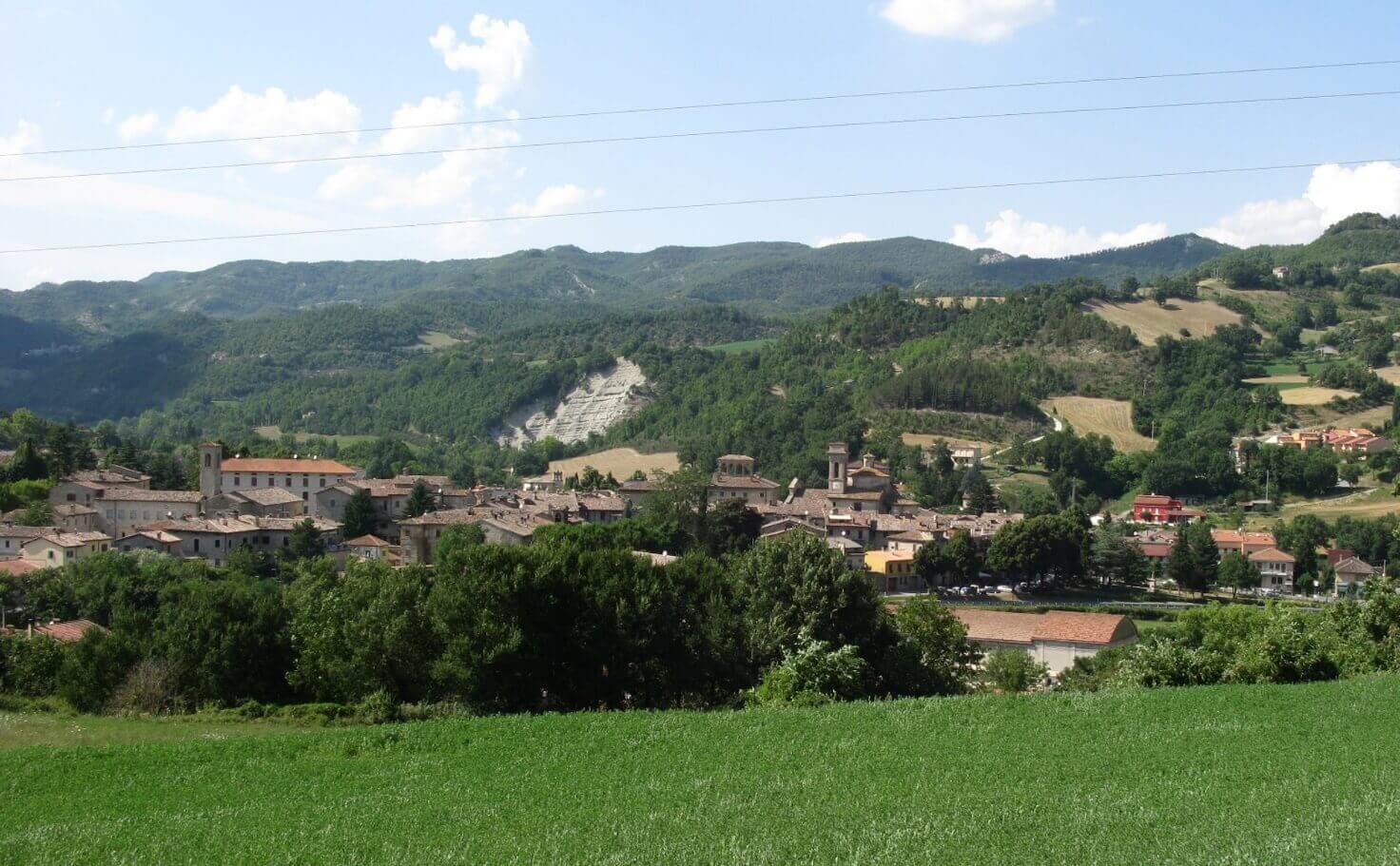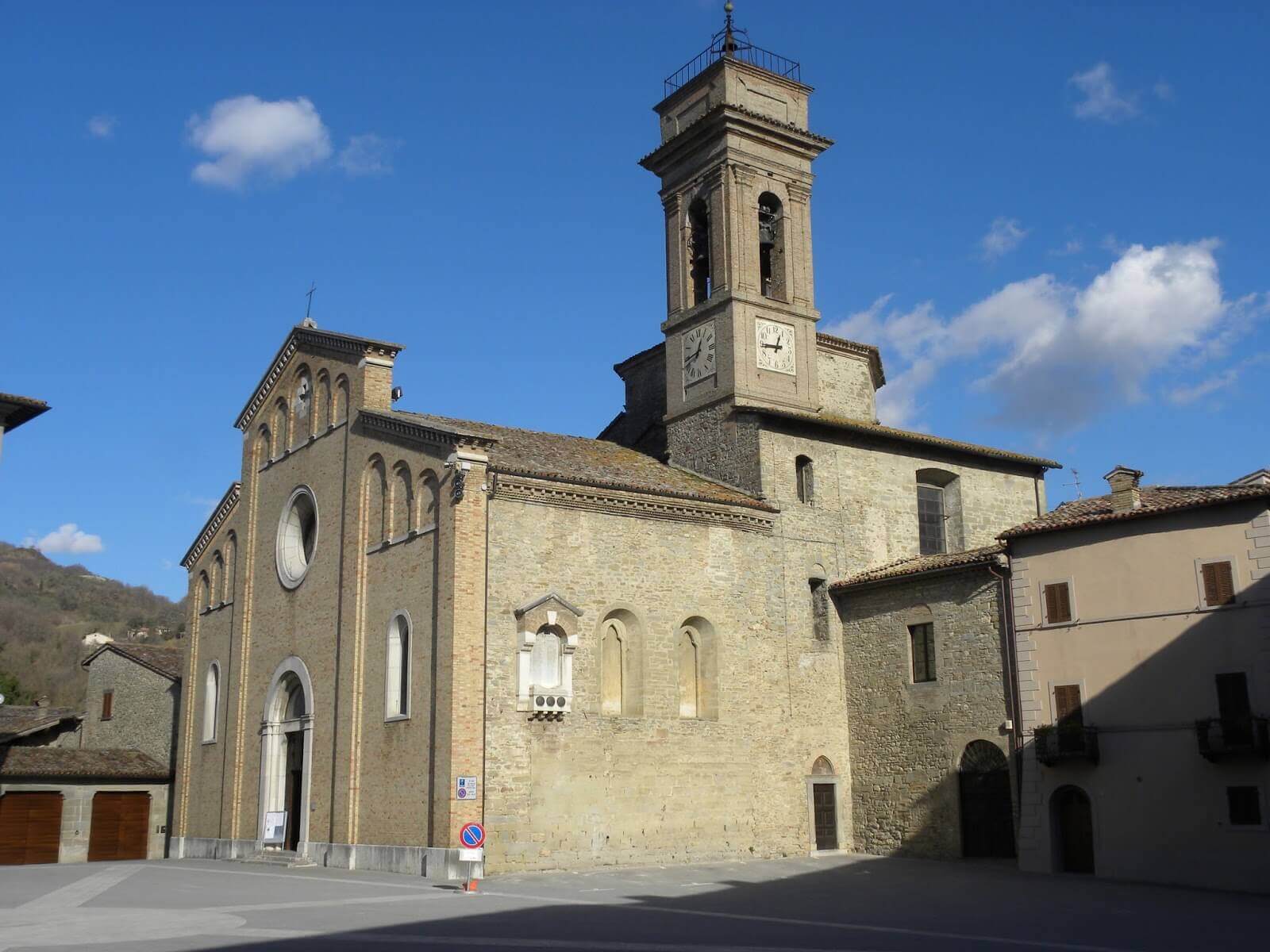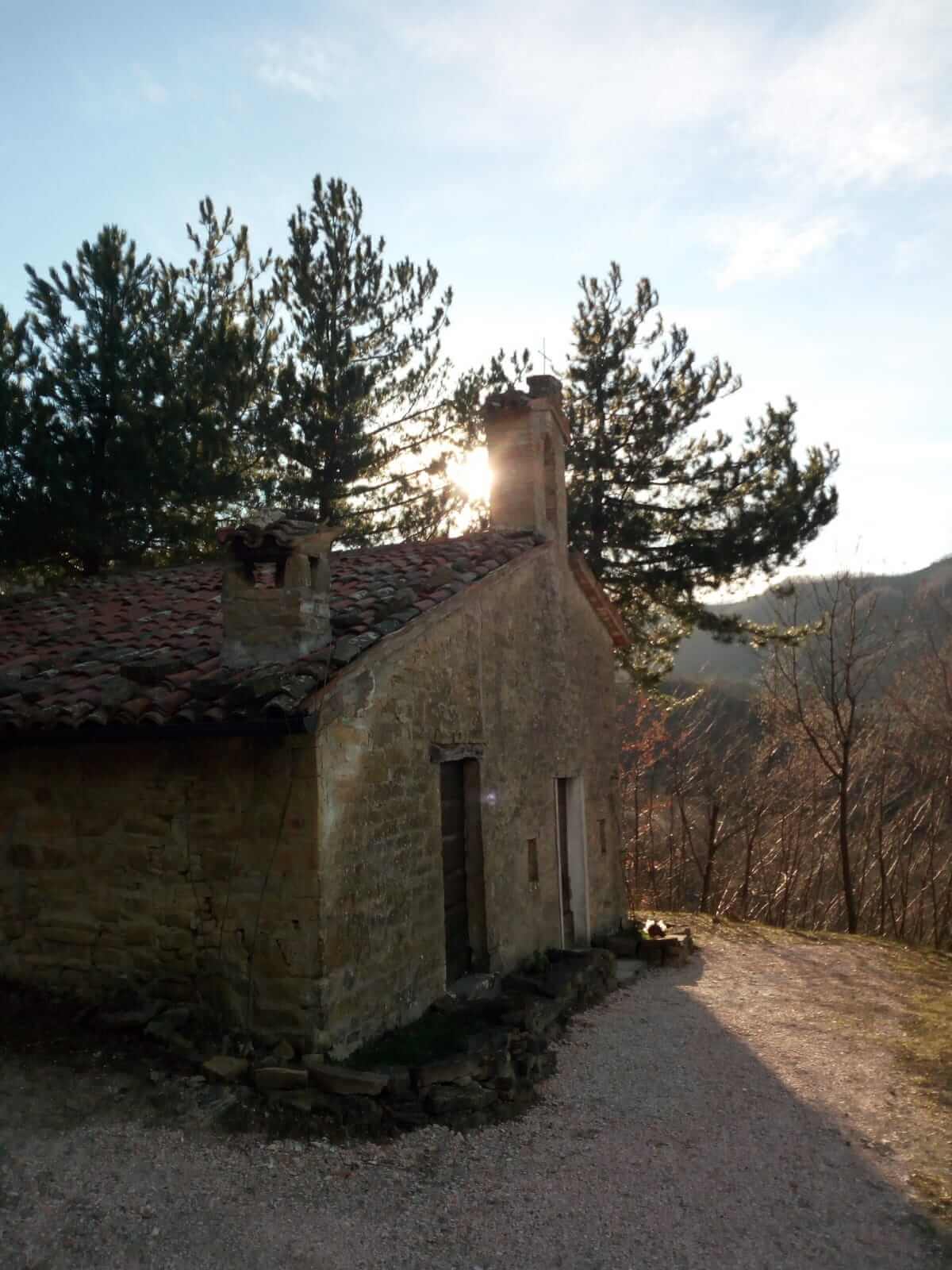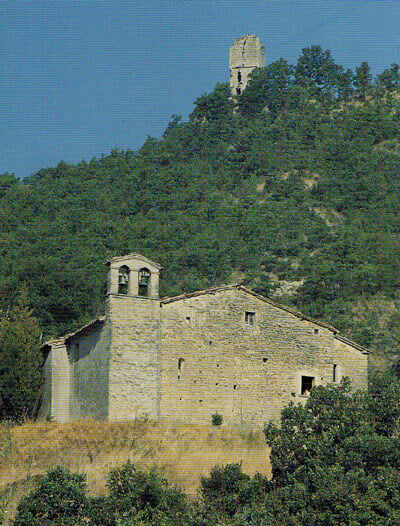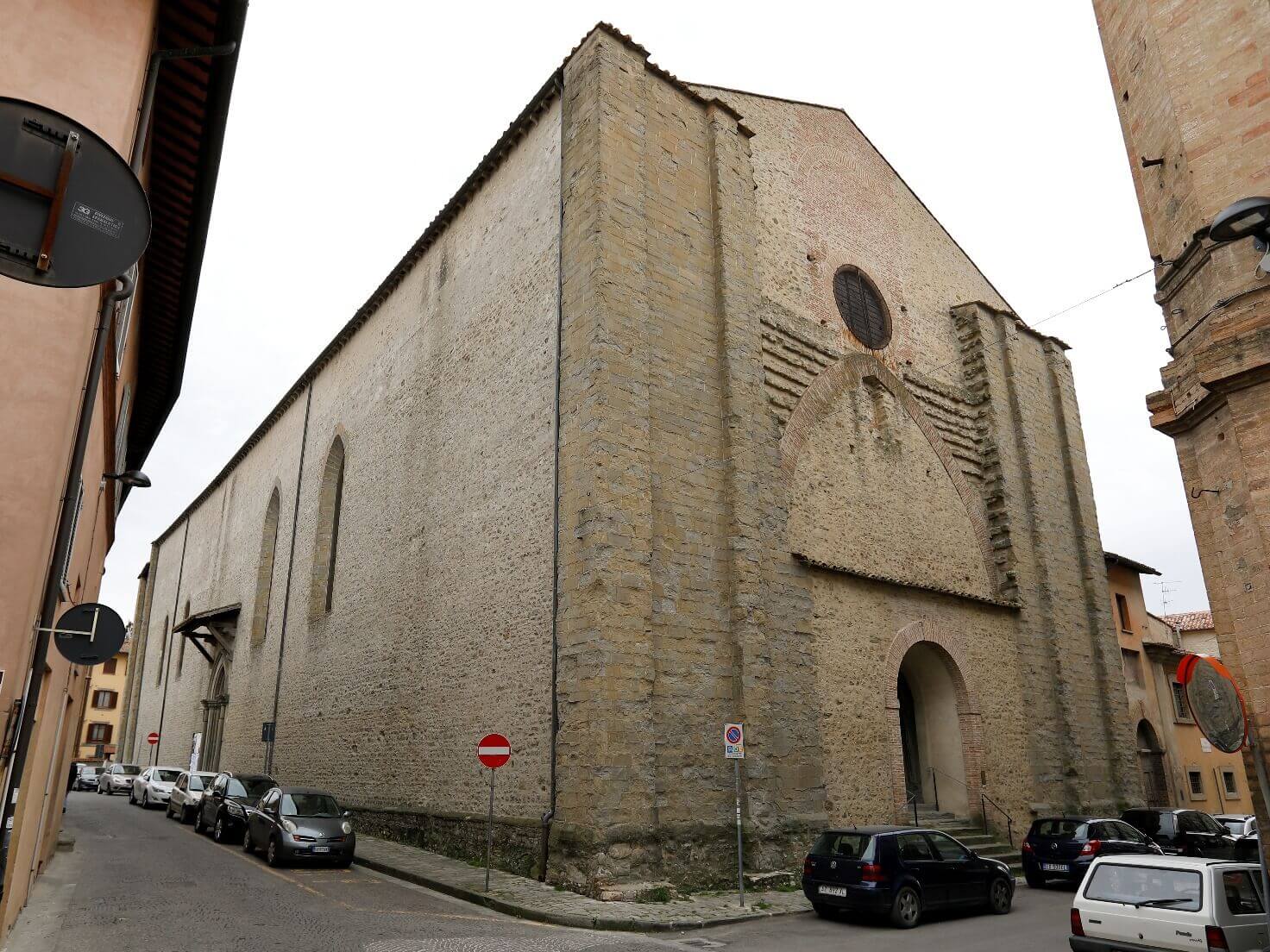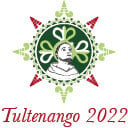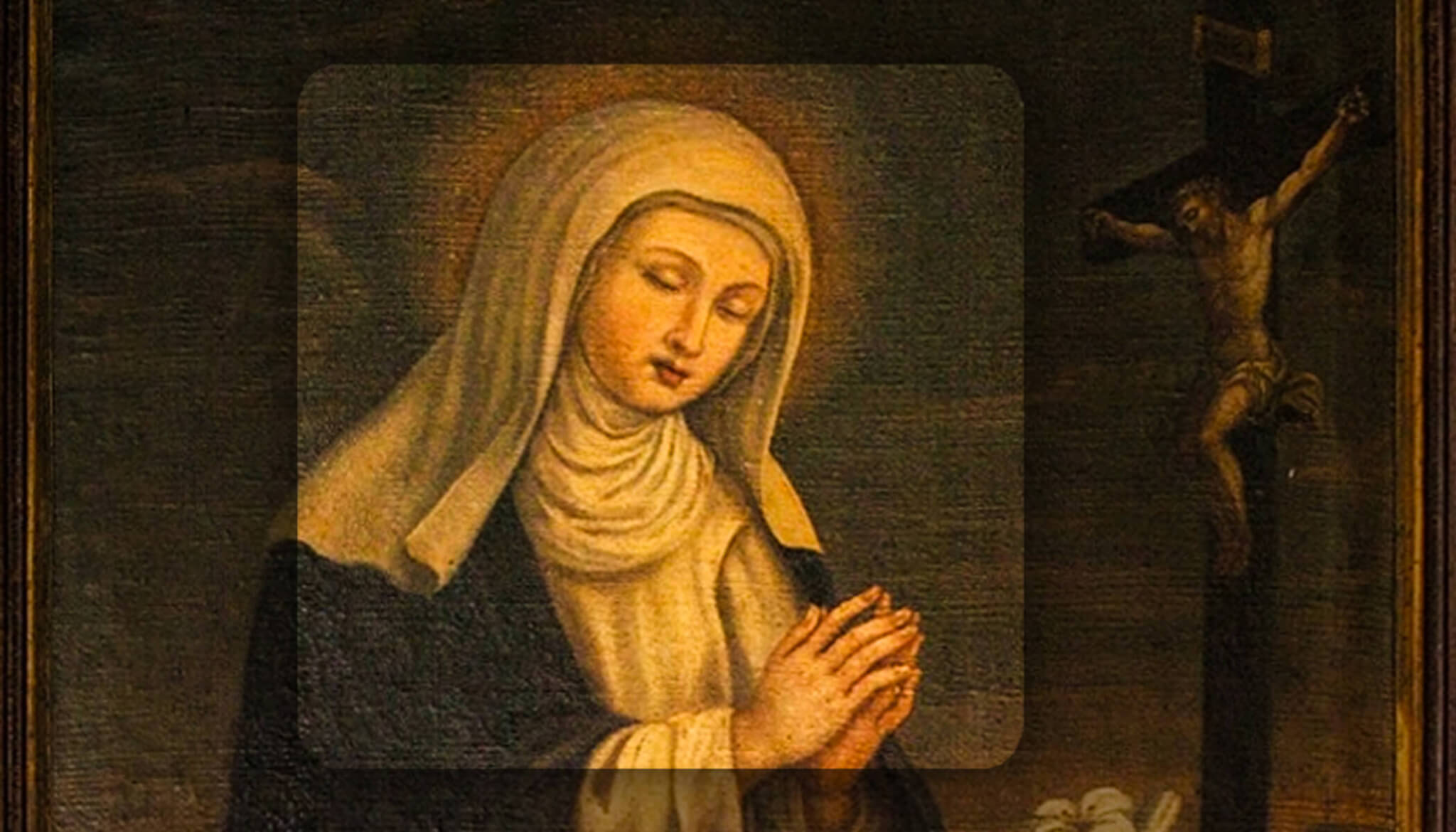

VIDEOS
GALLERY
Iconography
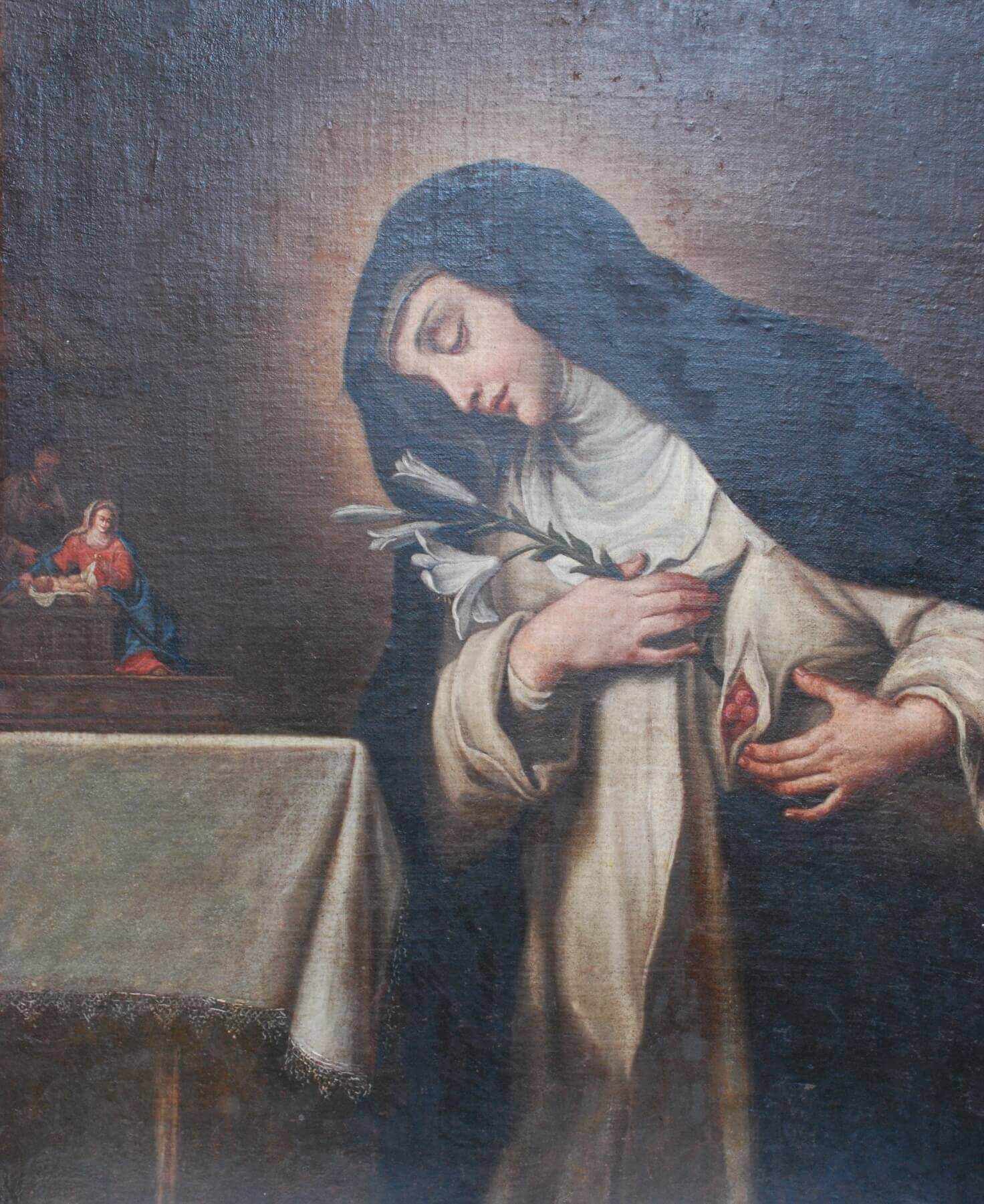
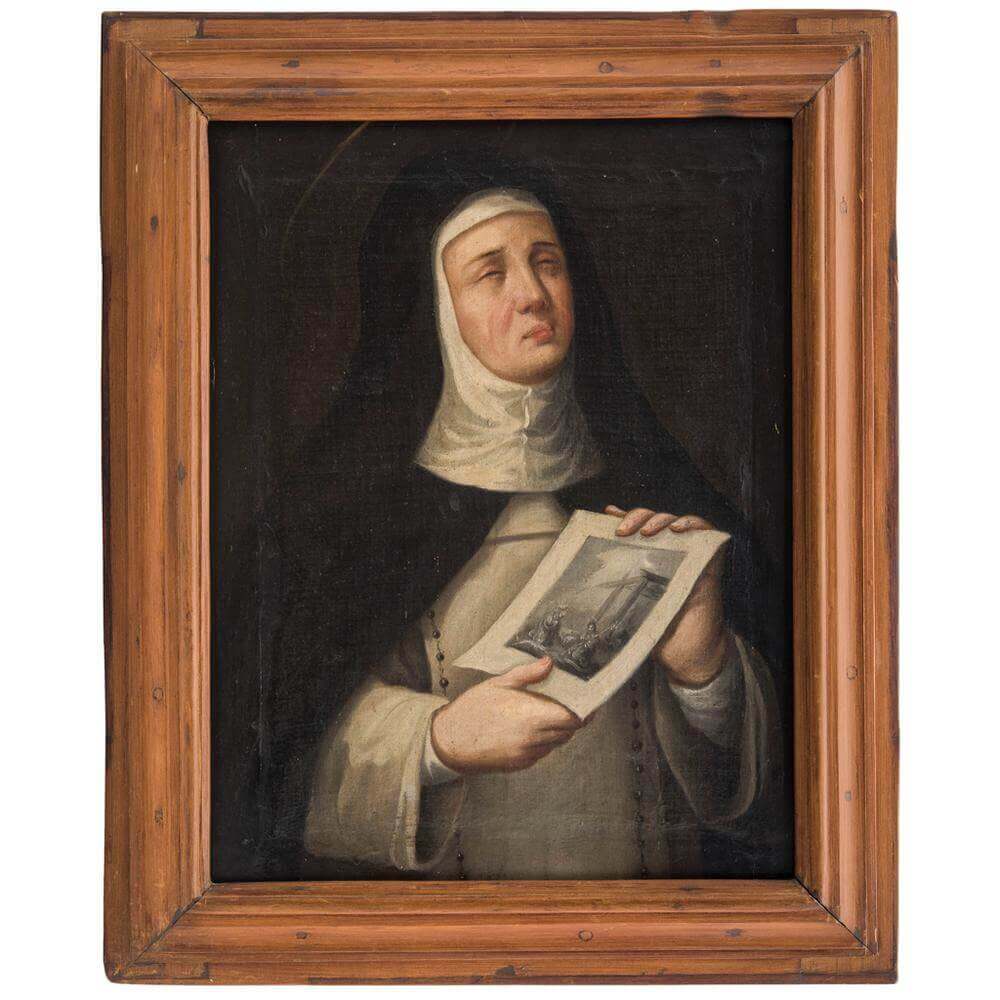
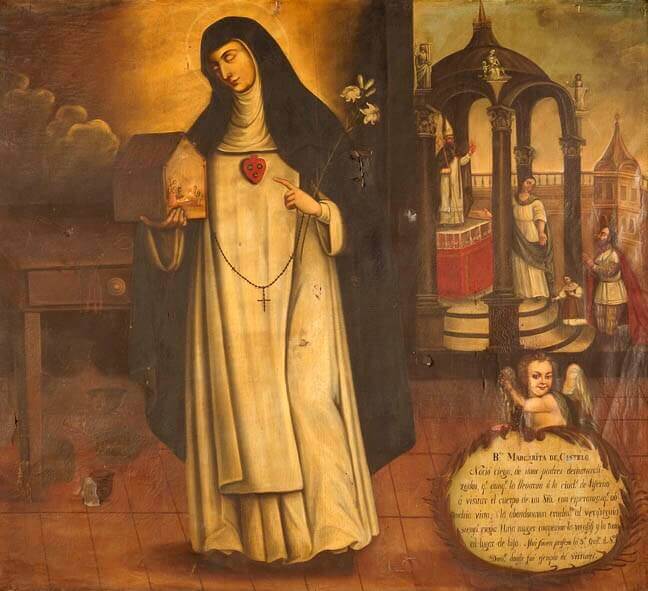
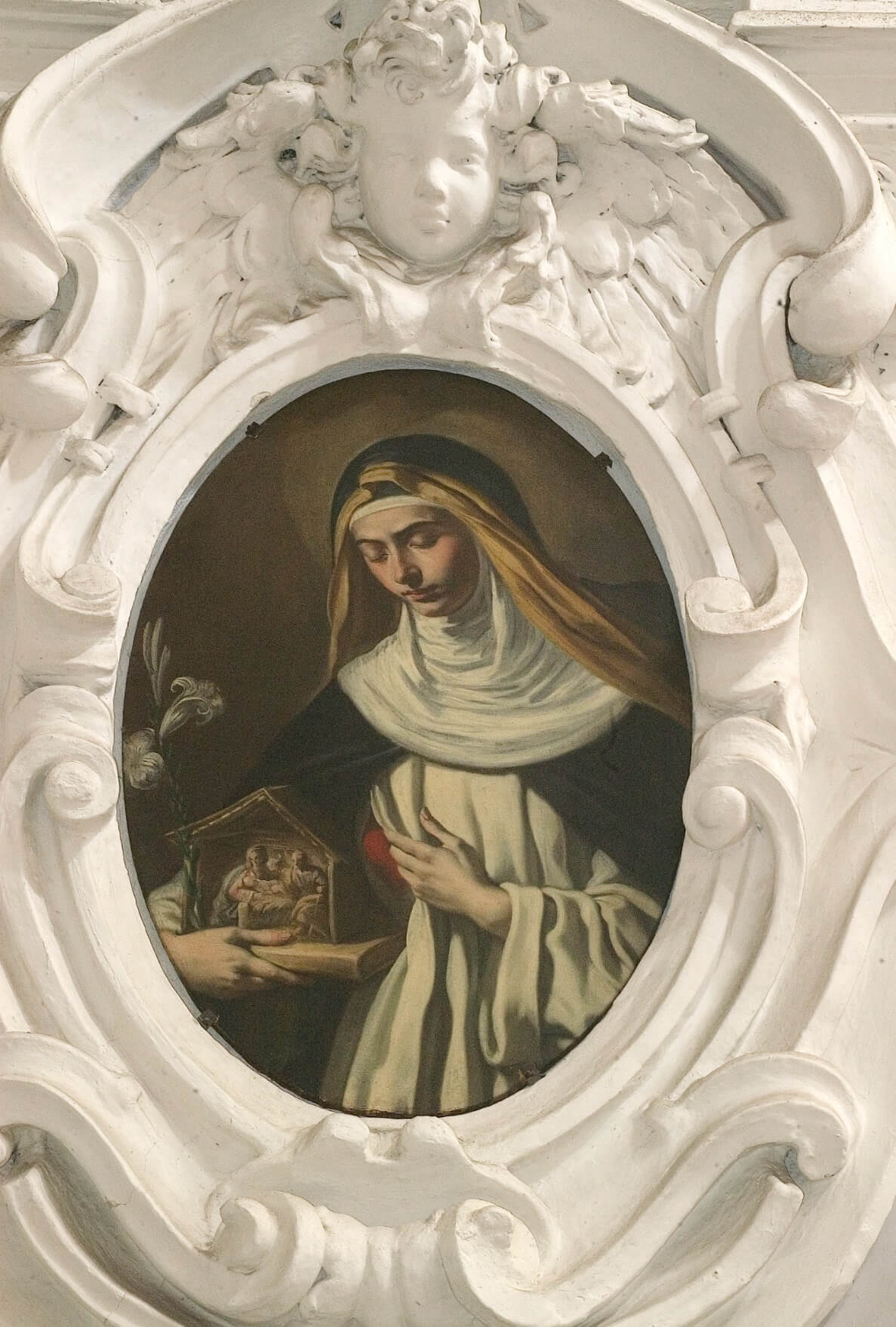
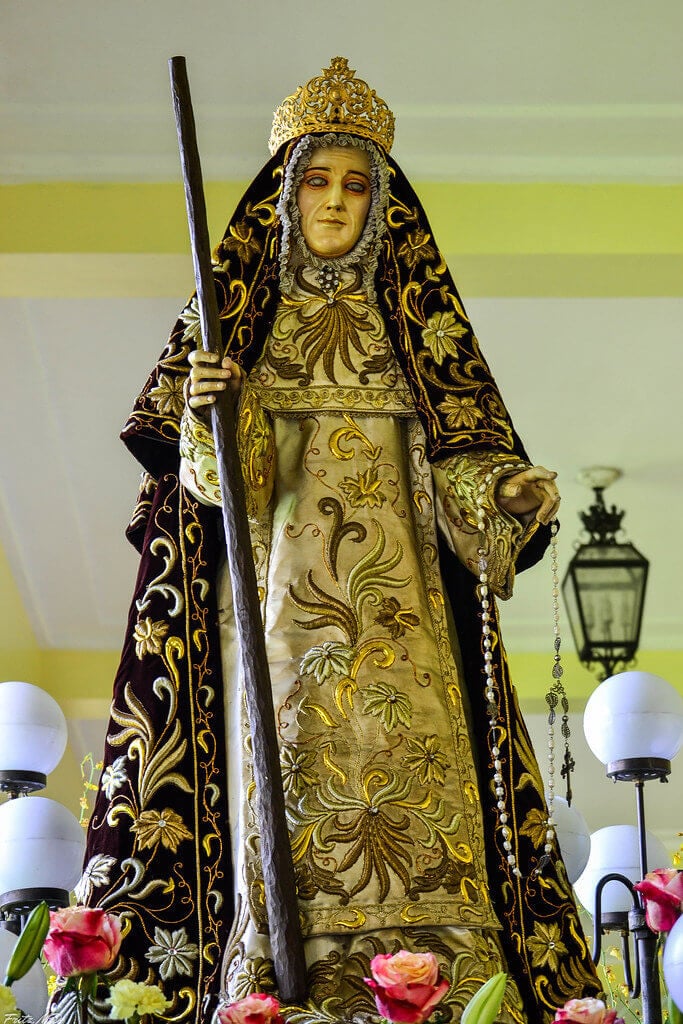
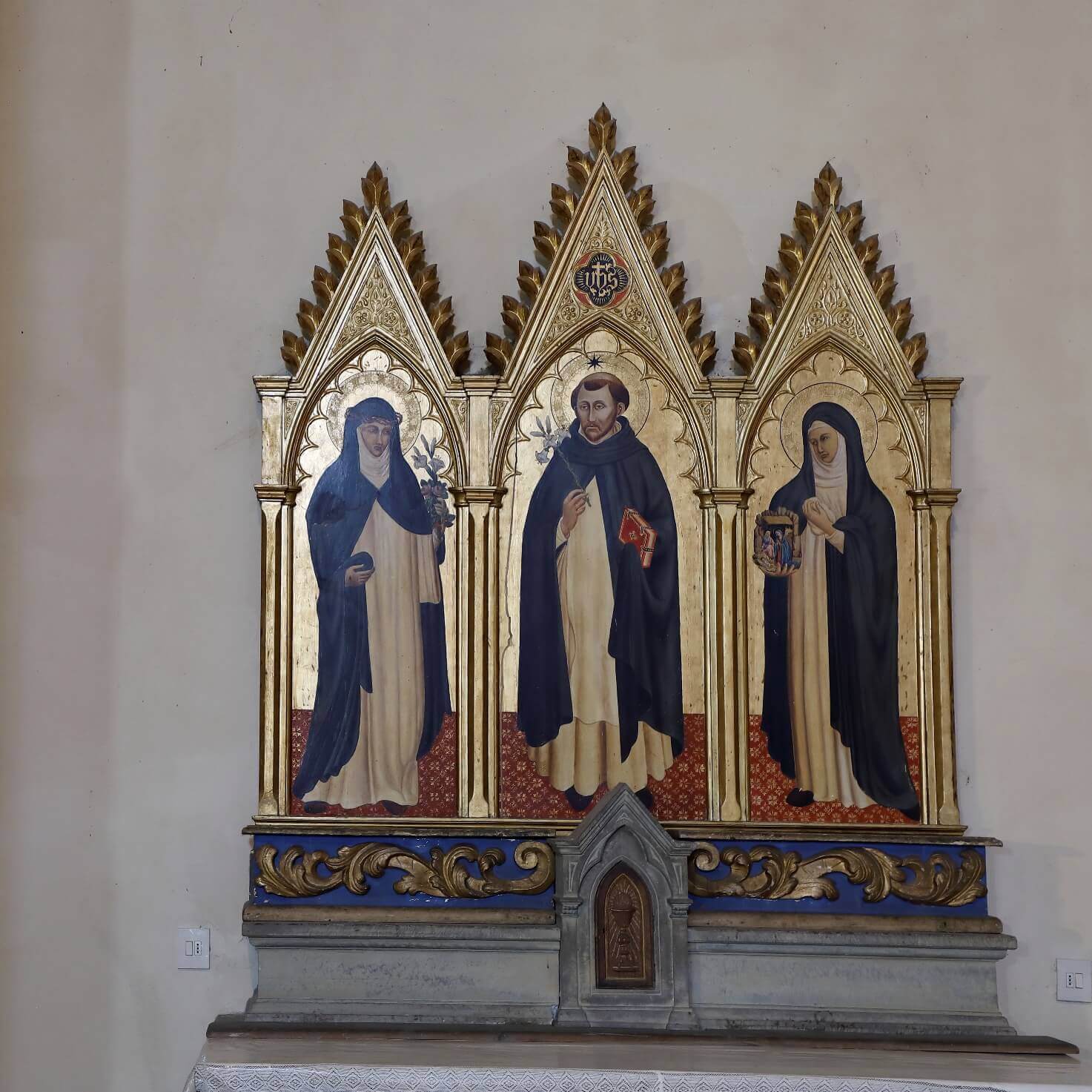
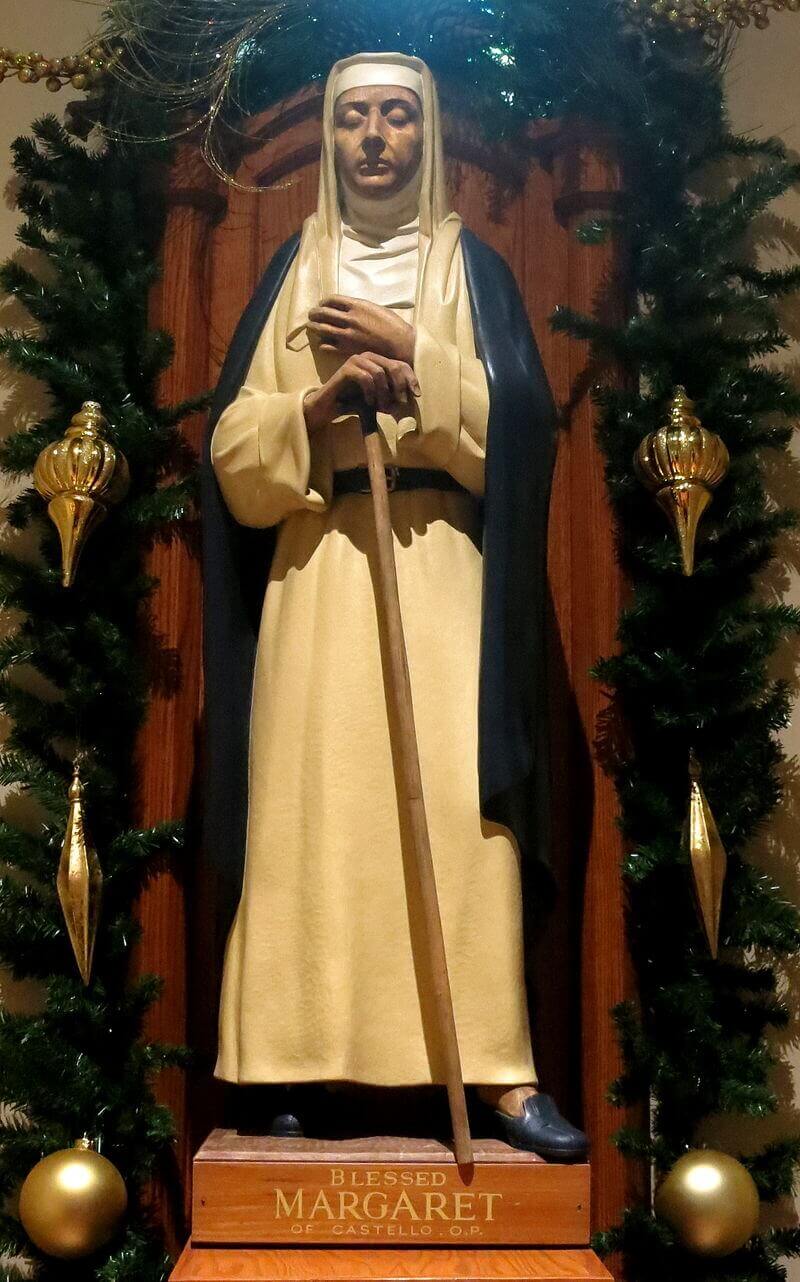
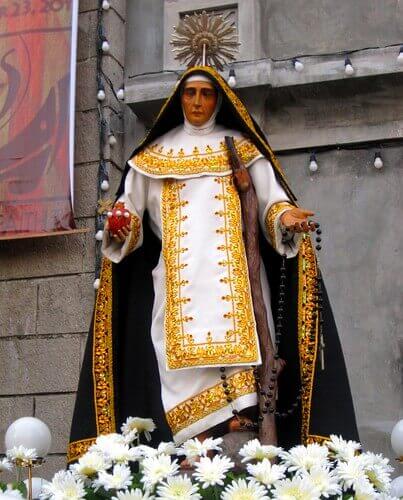
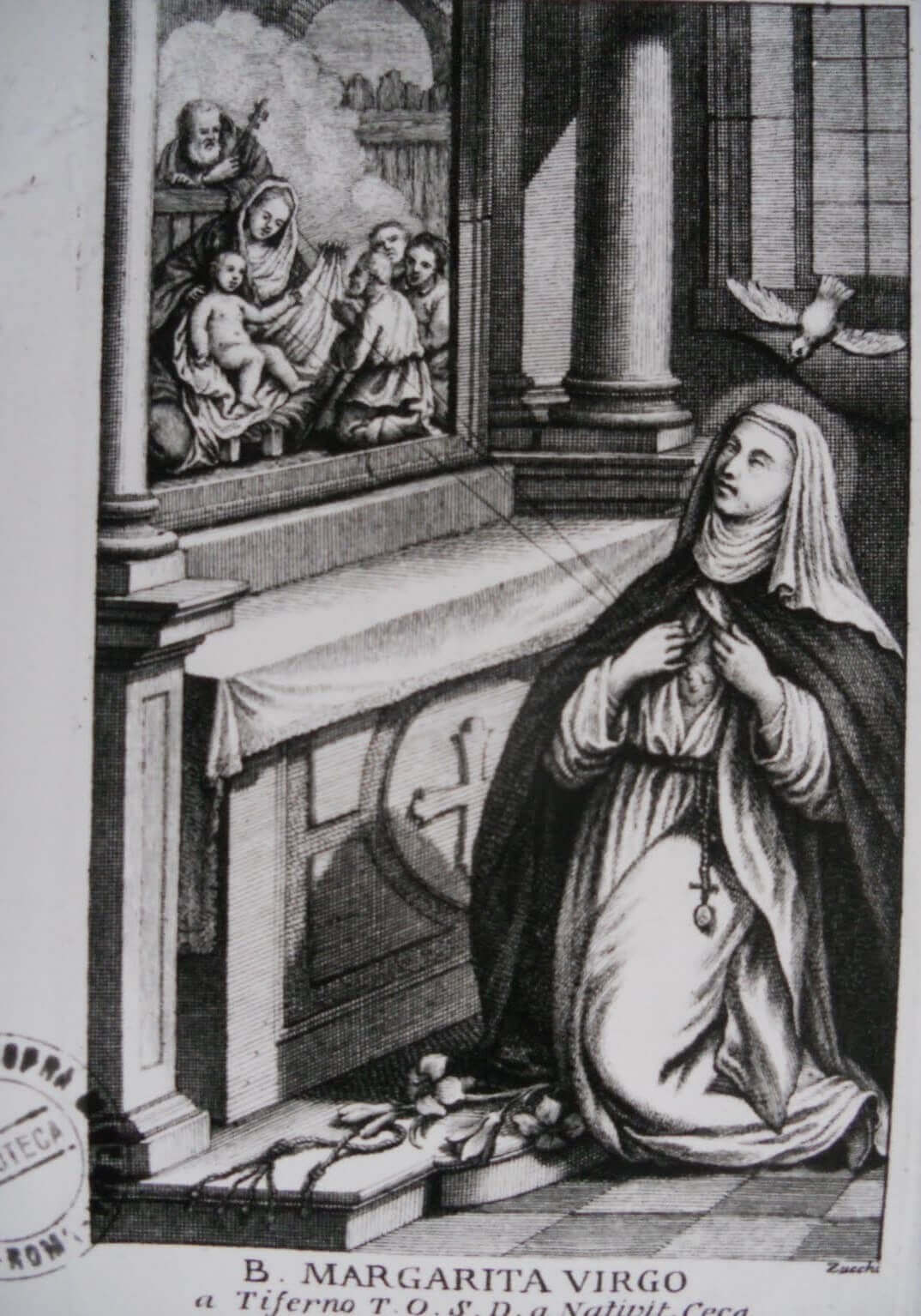
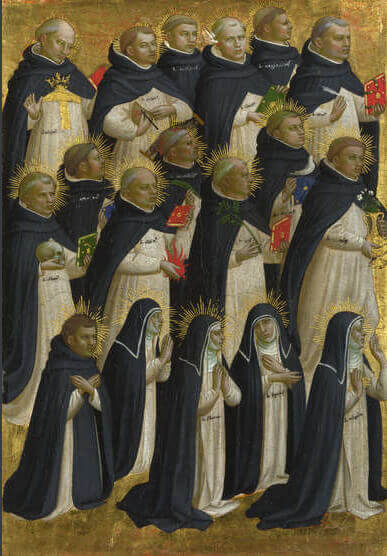
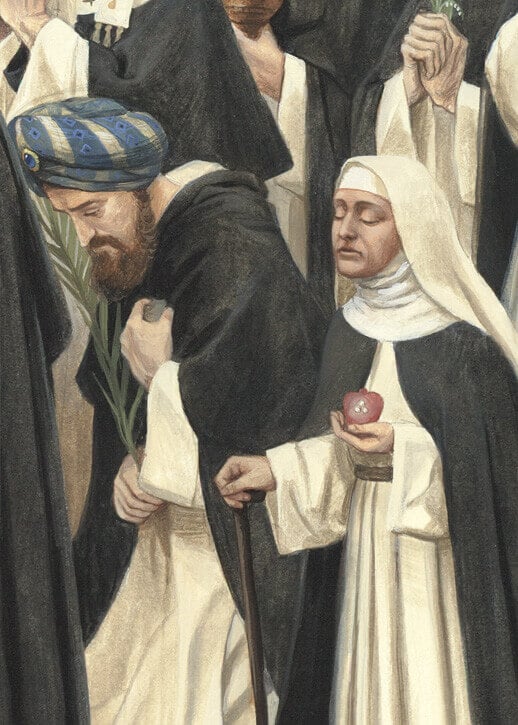
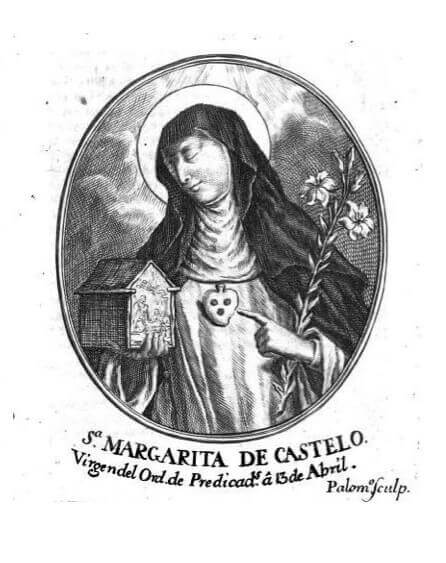
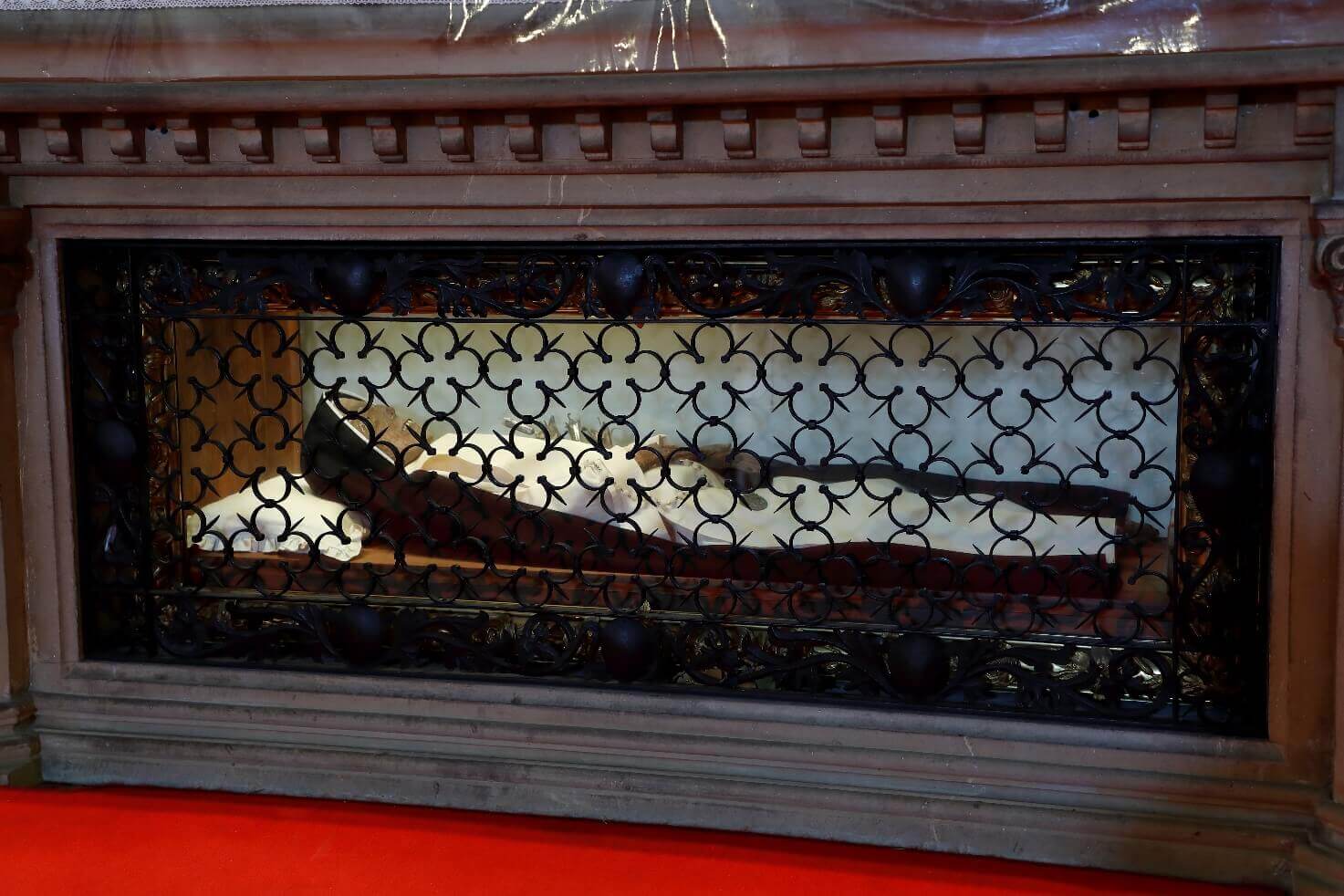
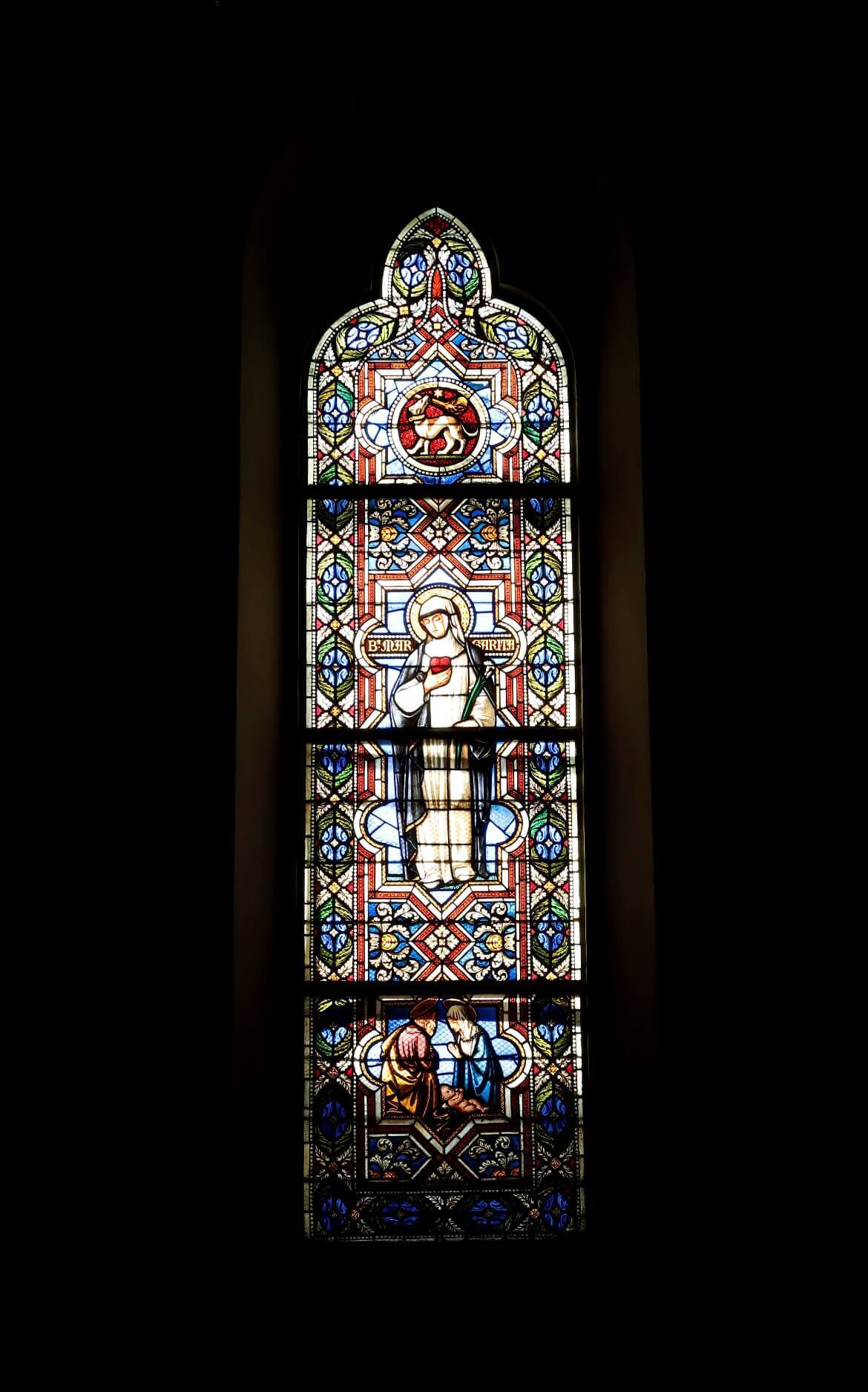
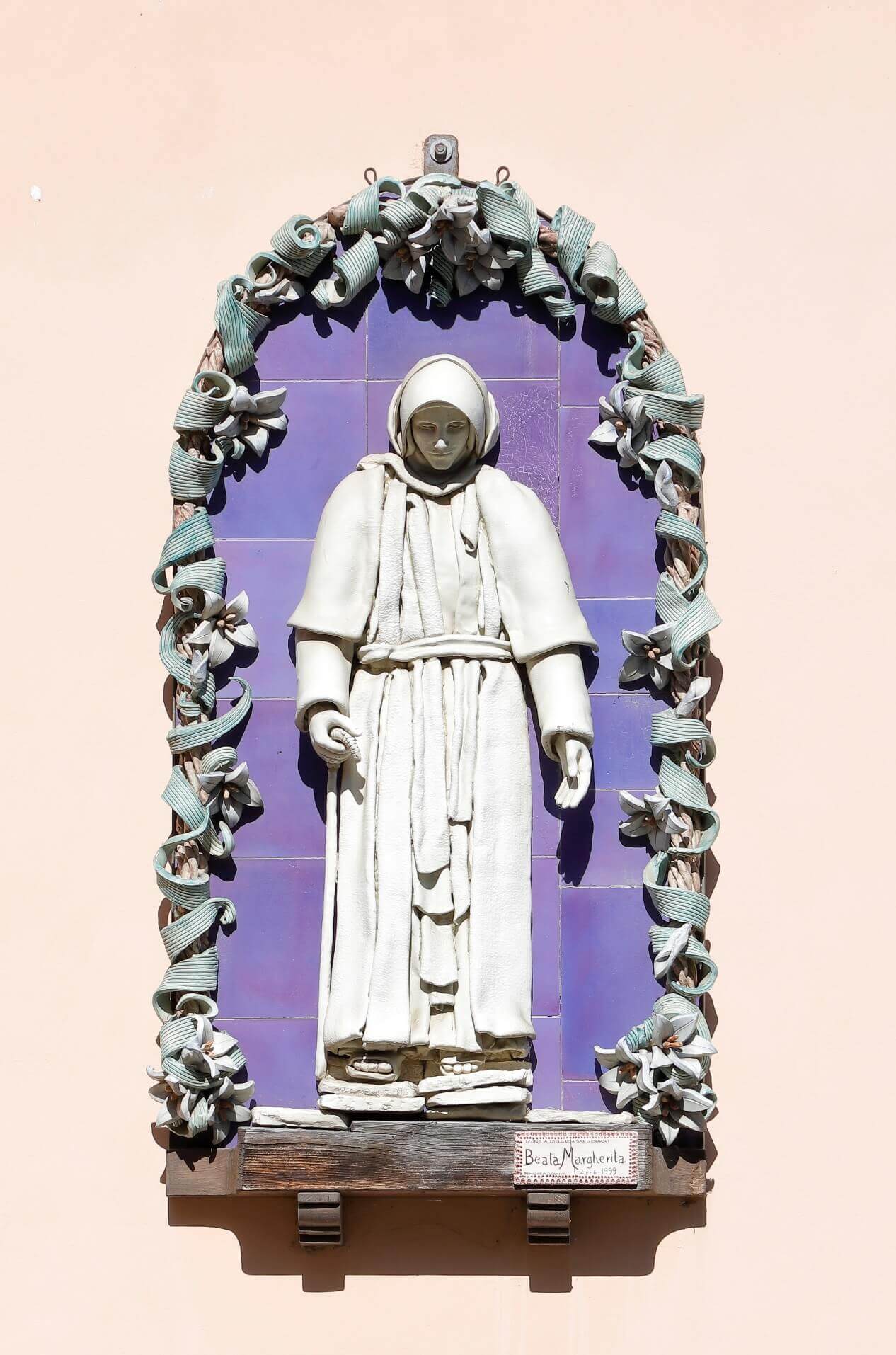
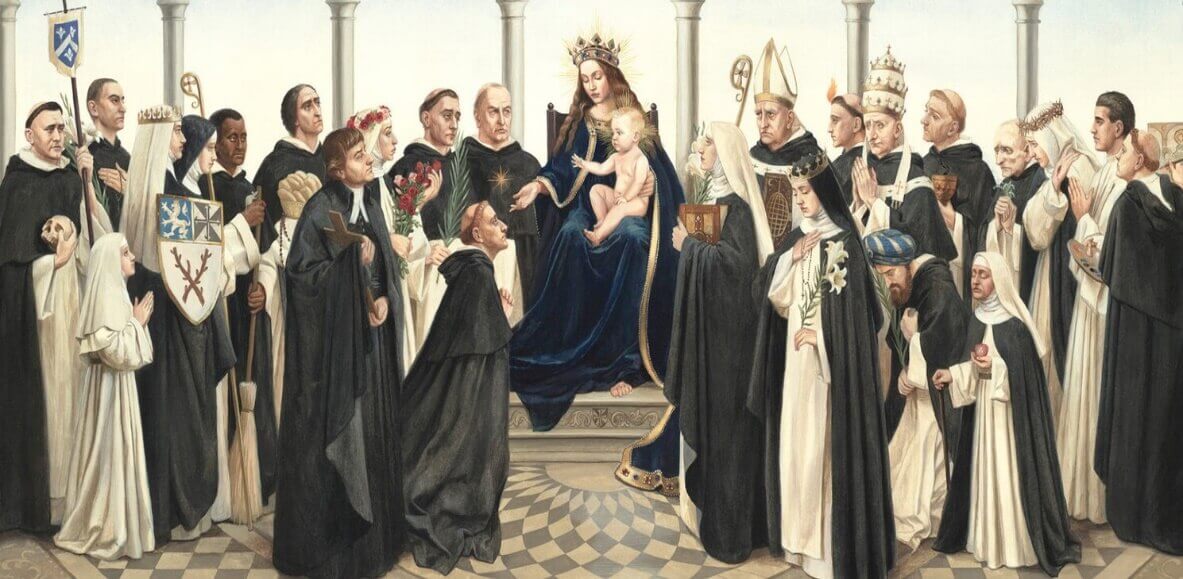
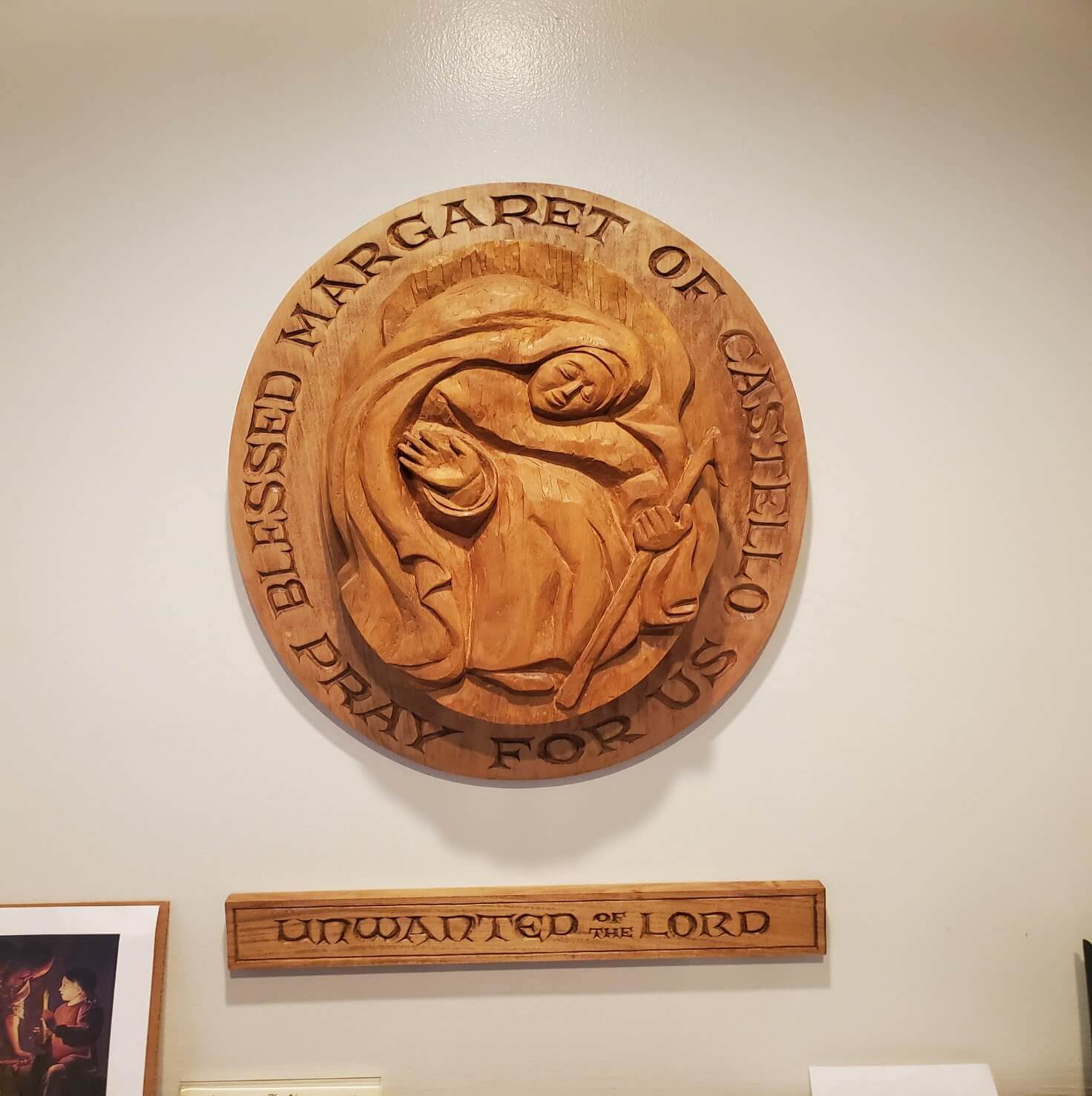
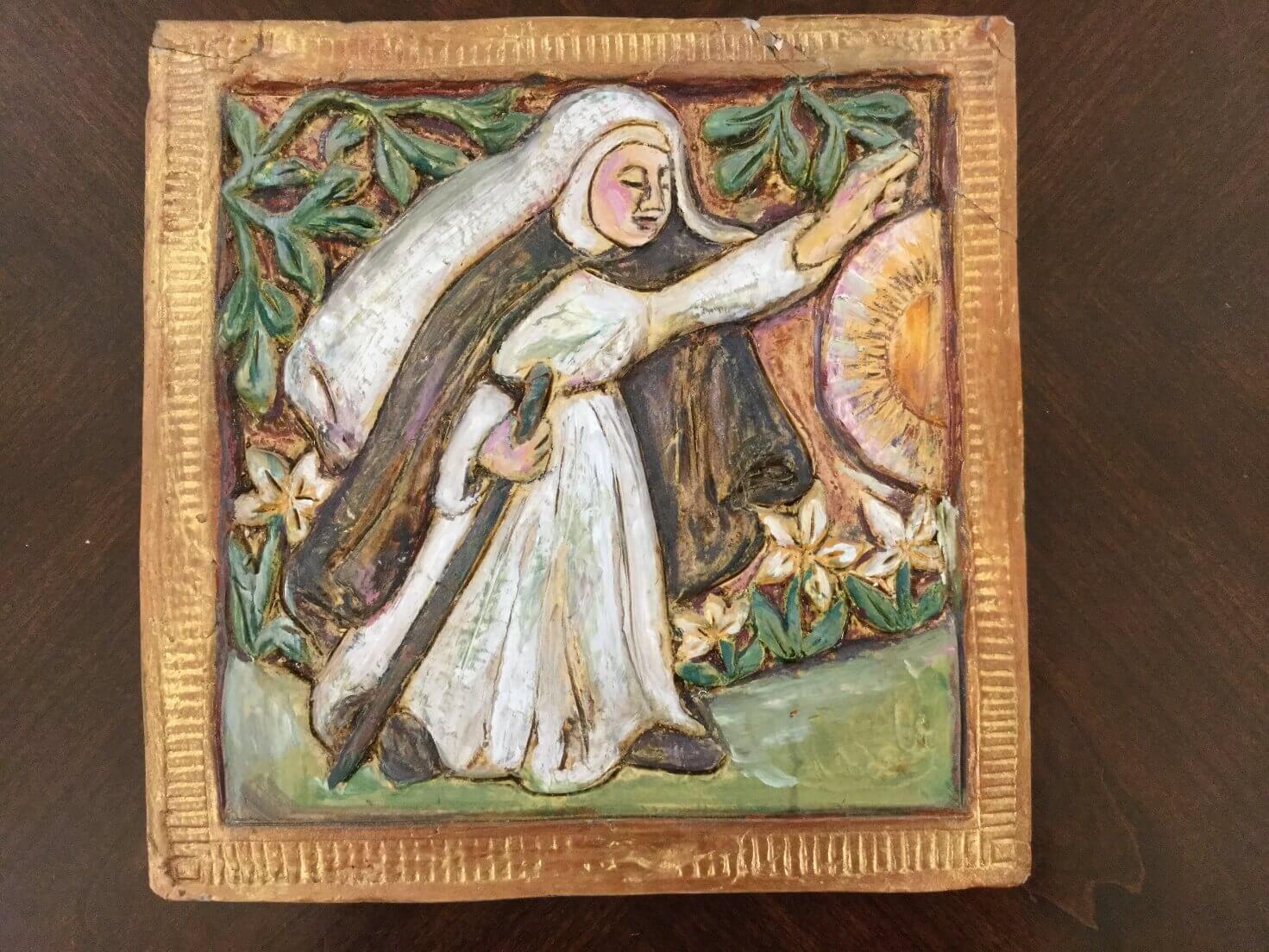
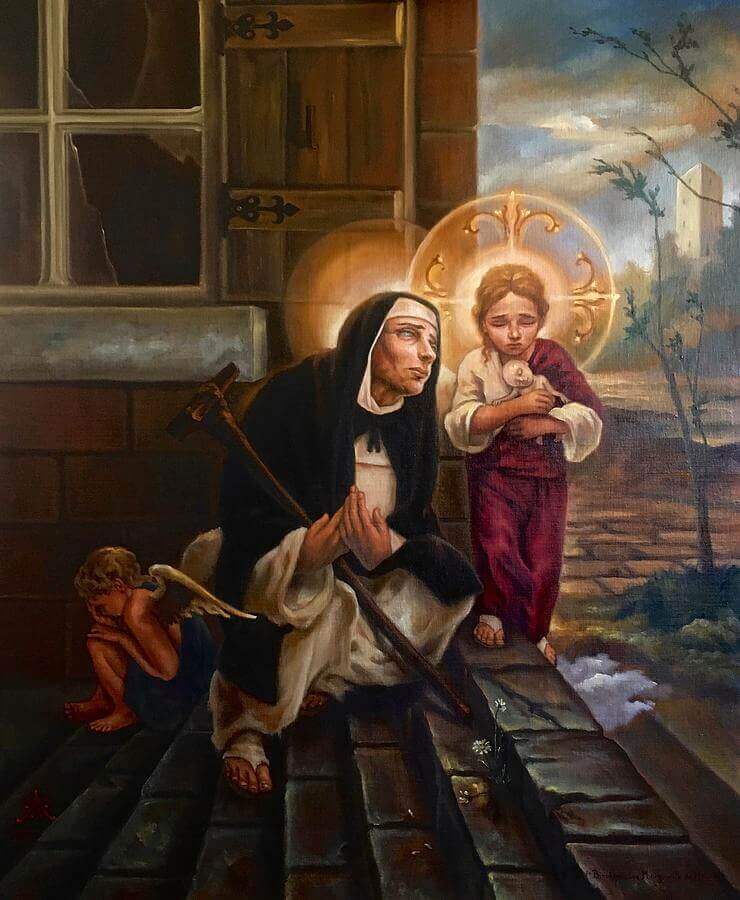
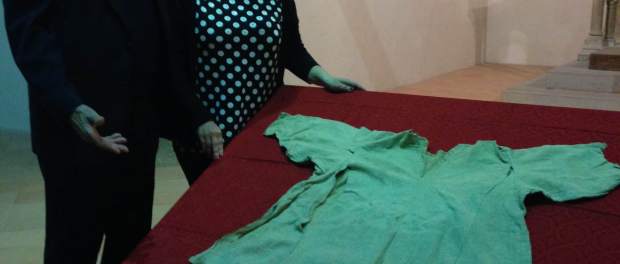
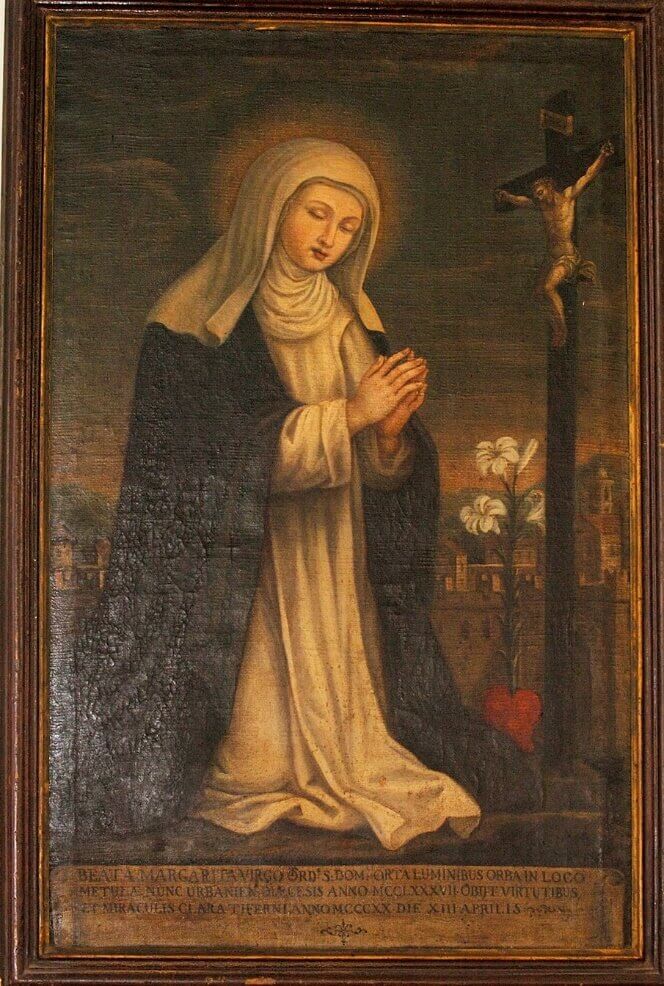
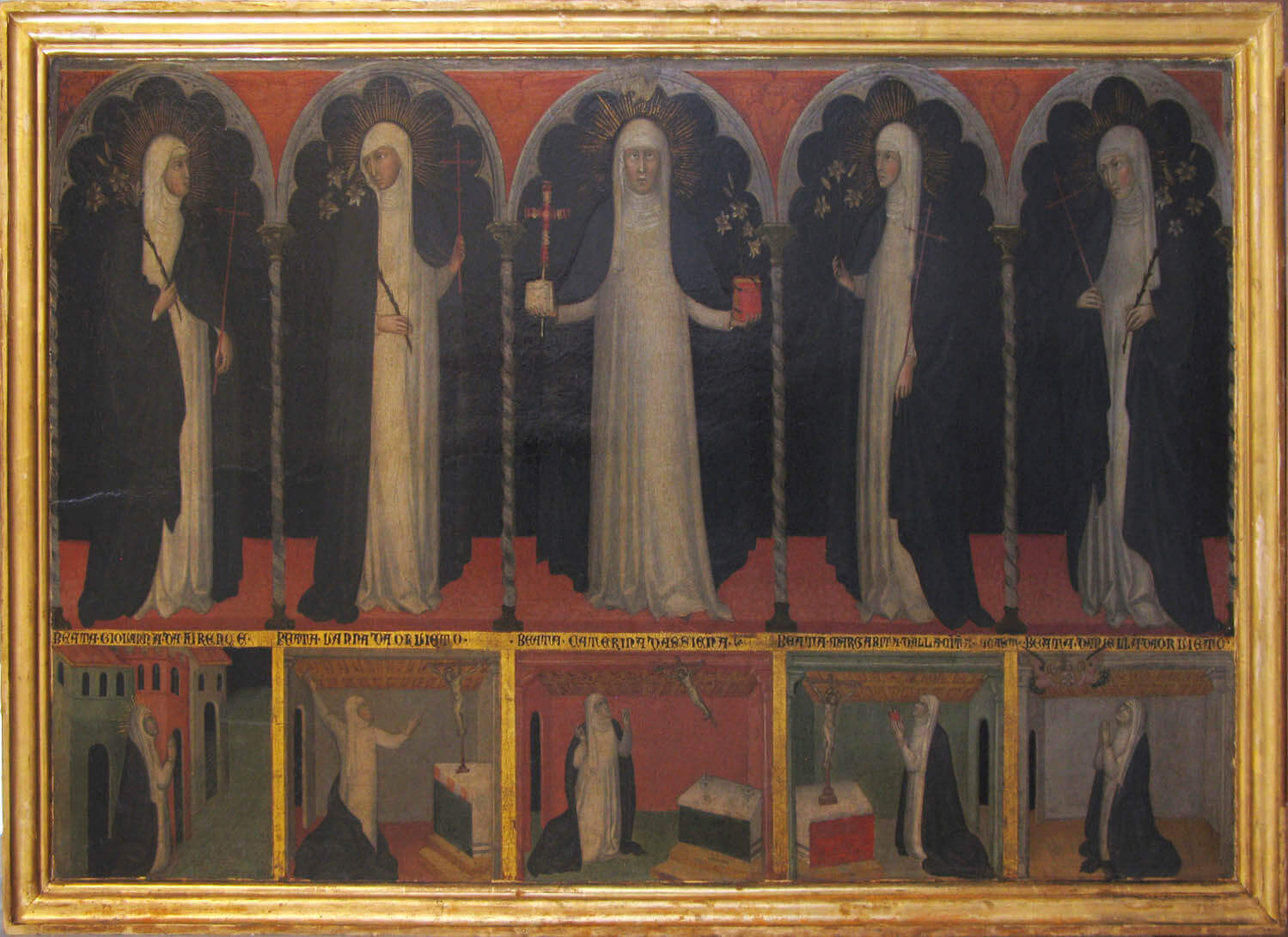
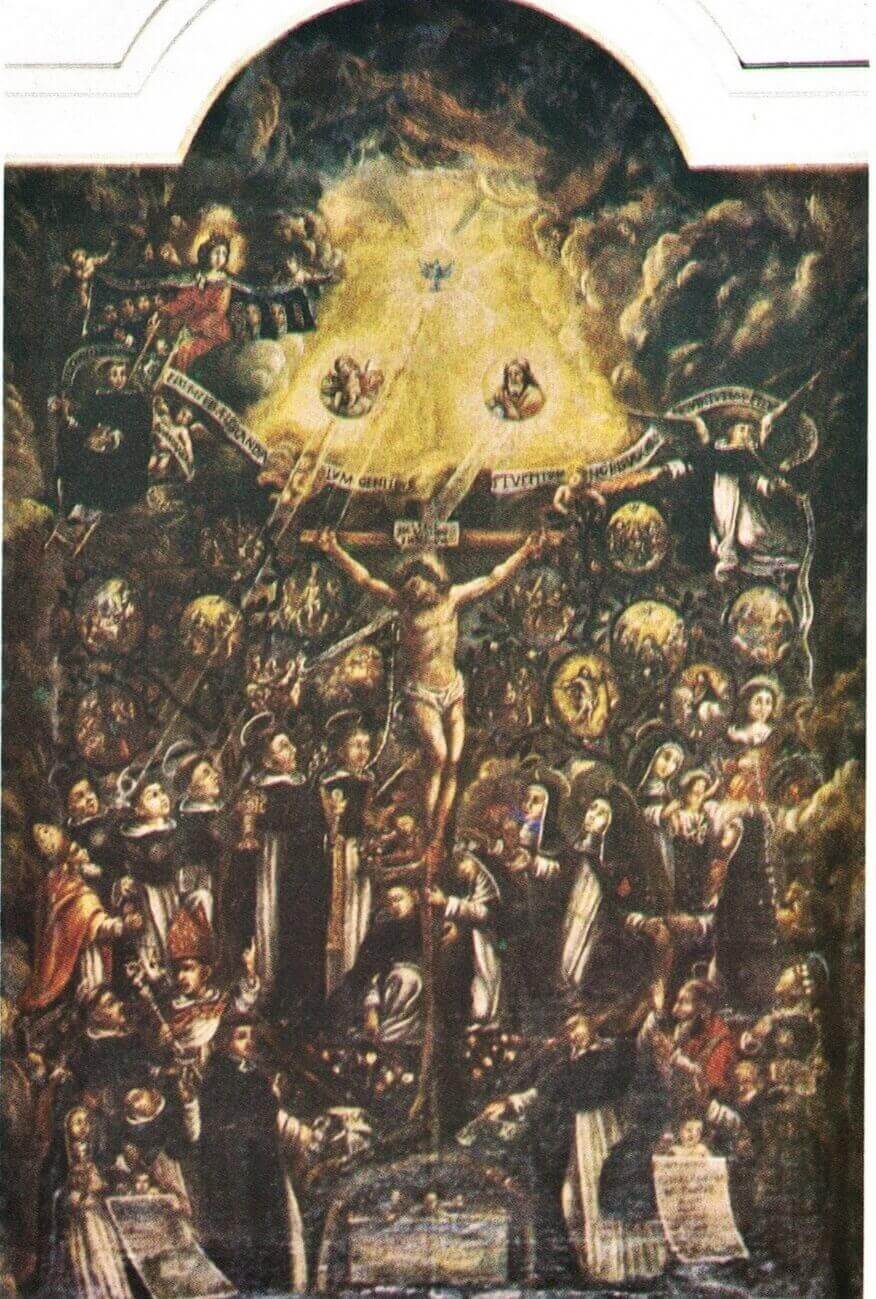
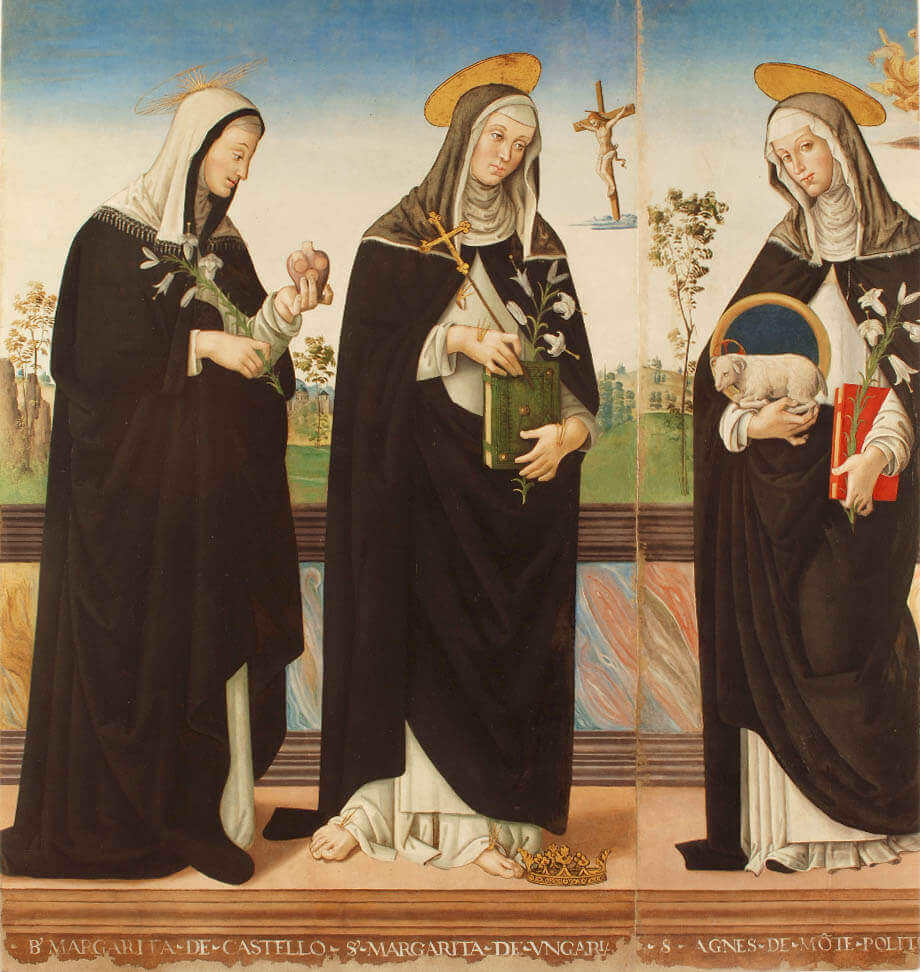
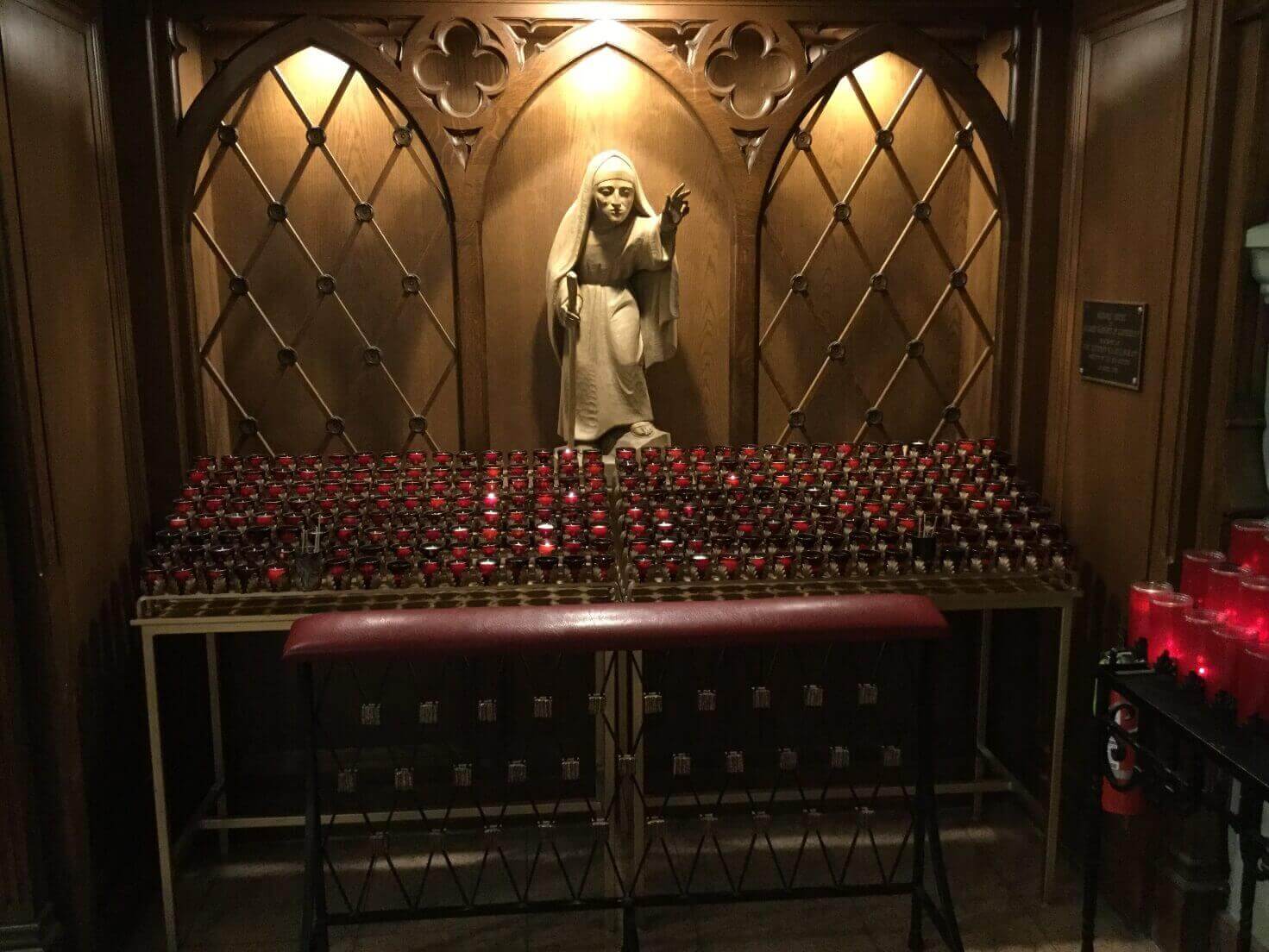
Veneto area, Blessed Margherita of Città di Castello (18th century), Venice, Convent of SS. Giovanni e Paolo, refectory.
Anonymous, Margaret of Castello (19th century), oil on canvas, Mexico.
The author and exact location of this painting are not known. However, the mention "Conde de Selva Nevada" places it in Mexico City, where the palace of this noble family, present in Mexico since the end of the 18th century, was located.
Antonio Palacios, Blessed Margarita de Castelo (1837), oil on canvas, Santiago de Chile, Museo Històrico Dominico.
The painting is an interesting testimony to the spread of the cult of the Blessed Margarita in Latin America. It is worth noting the completeness of the iconographic attributes used to identify her, in addition to her blindness of course: the lily and the rosary, common to all Dominican Blesseds, but also the three-lobed heart and the model of the crib.
Neapolitan ambit, Blessed Margherita of Città di Castello (18th century), Painting on canvas, 140x75 cm, Naples, Basilica of S. Maria della Sanità.
Blessed Margaret of Città di Castello (20th century), wooden statue, Las Navales, Manila (Quezon City, Philippines).
This is a processional statue of great devotional value, the symbol of the cult of Blessed Margaret in the Philippines. The Church of St. Dominic in Quezon City, also known as the Shrine of Our Lady of the Rosary, is the seat of the Preachers in the Asian archipelago, which was evangelised by the Order. There are variants of this statue, less richly dressed, but very representative.
Umbrian area, blessed Margherita of Città di Castello with San Domenico e Santa Caterina da Siena (20th century), Triptych, Città di Castello, Church of S. Domenico.
Blessed Margaret of Città di Castello (20th cent.), statue, wood, Louisville, Kentucky, St. Louis Bertrand Church.
Wooden statue of Blessed Margaret, with a hollowed but authoritative face, holds a stick, while her right hand is outstretched in a blessing gesture. Placed on the altar dedicated to her, erected in the 1980s in the Dominican church of Louisville in Kentucky, it was reproduced in the "holy cards" bearing on the back the prayer for the Novena to the Blessed and distributed by the American devotees of the Movement for Life.
Blessed Margaret of Città di Castello, 20th century, statue, Montreal, Canada.
Blessed Margaret and the Holy Family (1761), engraving.
This iconography is particularly interesting. From the painting of the Holy Family above an altar there are three rays that pierce the heart of the Blessed Virgin, where the three stones are clearly visible. This is an obvious reference to plastic stigmatisation. The engraving is printed in V. Mugnani, Sagro Settenario, Venice, Bettinelli, 1761.
Beato Angelico, Blessed Margaret with Dominican Saints and Blesseds (1423-1424), predella, London, National Gallery.
Bernadette Carstensen, The Dominican Saints (2016), painting, United States of America.
Margaret is easily recognisable: small in stature and blind, she holds her heart in one hand and her cane in the other. The composition, bright and clear, is characterised by a classical composure. Carstensen has declared that she was inspired by the models of Fra Angelico and Van Eyck, who are expressly mentioned in the iconography of the Crowned Virgin.
Città di Castello, Church of San Domenico, High Altar with the urn of the Blessed
Città di Castello, Church of San Domenico, Stained-glass window with the Blessed Margaret
Città di Castello, Aedicula of the Blessed Margherita
The painting was commissioned from the American artist by the Dominican Province of St Joseph on the occasion of the Jubilee for the 800th anniversary of the founding of the Order of Preachers. It depicts 24 characters - men and women - who are particularly representative of the Order's corporal life.
Mary Grace Thul, Blessed Margaret of Città di Castello (20th cent.), sculpture, wood, Dominican Convent of St. Dominic, Washington DC.
Mary Grace Thul, O.P., Blessed Margaret of Città di Castello (20th century), ceramic plaque, Springfield Monastery, Illinois.
Paul Armesto, Blessed Margherita of Città di Castello e Gesù, work uploaded on 29 January 2020. Reproducible in series with different techniques and prices.
The author of the painting, born in France, lives and works in New York. He specialises in sacred art and his works are especially popular in the United States and Costa Rica. Marguerite is depicted as a blind beggar. Her eyes are dull, but turned towards Jesus who, with a face full of pain, holds an unborn child to his breast. A little angel, huddled in the bottom left-hand corner of the painting, weeps, covering his face. The subject of the work, both pathetic and crude, alludes to the iconic function of Margaret, who is the recognised patron saint of pro-life movements in the United States.
Mercatello, Pieve d’Ico,
Tunica B. Margaritae a Civitate Castelli Ordinis sororum S. Dominici
Marche area, Blessed Margherita della Metola (17th century), canvas, 140x60 cm, Mercatello sul Metauro, collegiate church of SS. Pietro e Paolo.
Andrea di Bartolo (former Master of the Dominican Effigies), Blessed Margaret of Città di Castello with the Dominican Blesseds Giovanna of Florence, Vanna of Orvieto, Catherine of Siena, Daniela of Orvieto (1394-1398), tempera on panel, 61x103 cm, Venice, Gallerie dell'Accademia.
Apulian area, Glory of the Dominican Order (18th century), painting on canvas, Mesagne, Church of SS. Annunziata, first chapel on the left.
Ludovico di Angelo Mattioli, early 16th century, Perugia, The Blessed Margherita of Città di Castello, Margherita d'Ungheria, Agnese da Montepulciano.
Blessed Margaret of Città di Castello (20th century), statue, wood, Louisville, Kentucky, Church of St. Louis Bertrand.

























Places related to St. Margaret
